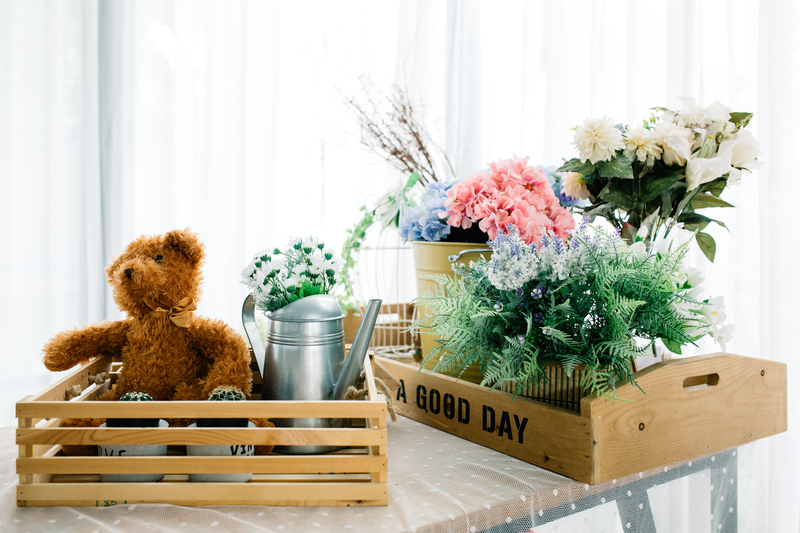Green Waste Management for Plant Pots: A Sustainable Approach
Green waste management for plant pots is an emerging practice that combines gardening with eco-friendly principles. As more people embrace urban gardening, sustainability in handling pot waste--soil, plant clippings, used containers--has gained significant importance. This comprehensive guide explores the best practices, latest innovations, and effective methods for managing green waste in connection with plant pots.

Understanding Green Waste in Plant Pots
Before diving into management strategies, it's critical to define what constitutes green waste. In the context of plant pots, green waste generally includes:
- Dead plants and leaves
- Pruned stems and branches
- Spent potting mix or soil
- Biodegradable plant tags and supports
- Broken clay or biodegradable pots
Proper green waste handling prevents landfill overcrowding, reduces greenhouse gas emissions, and creates valuable resources for future gardening endeavors.
Why Focus on Waste from Plant Pots?
With the surge of container gardening in cities and small spaces, plant pots have become a central feature of modern landscapes. Each growing season generates a surprising amount of waste. When ignored, this waste can contribute to environmental degradation. By focusing on green waste management for plant pots, you're not only aiding your garden but also protecting the broader ecosystem.
The Basics of Green Waste Management for Plant Pots
1. Reduce: Minimizing Waste Production
- Choose durable pots: Invest in pots made from materials that last multiple seasons.
- Use quality potting soil: Good soil degrades slower, minimizing the need for frequent replacement.
- Opt for slow-growing or perennial plants to reduce frequent re-potting.
2. Reuse: Extending the Life Cycle
- Repurpose old pots: Repair or repaint them, or use them for different plants.
- Reuse plant stakes, tags, and supports year after year.
- Mix spent potting soil with compost to replenish nutrients for your container plants.
3. Recycle: Responsible Disposal
- Recycle plastic pots at local garden centers or recycling centers. Some nurseries have dedicated collection programs.
- Compost plant-based waste such as leaves, stems, and roots for natural fertilizer.
- Use biodegradable pots which break down in compost systems.
Composting Green Waste from Plant Pots
Composting is a cornerstone of green waste management for plant pots. It transforms organic refuse into nutrient-rich compost for your potted plants.
How to Compost Plant Pot Waste Effectively
- Remove infected or diseased plant material--these should not go in the compost to avoid spreading pathogens.
- Shred large stems or roots for quicker decomposition.
- Mix green material (leaves, clippings, soft stems) with brown material (dry leaves, straw, cardboard).
- Maintain proper moisture: Compost should feel like a wrung-out sponge--damp but not soggy.
- Turn the compost pile every 2-3 weeks for aeration.
Finished compost can be blended into fresh potting mixes, providing a natural boost to container plants while significantly reducing waste.
Eco-Friendly Disposal of Old Potting Soil
What do you do when potting soil becomes spent, salty, or compacted? Disposal options include:
- Amend garden beds: Mix old soil with fresh compost and use it in garden beds or around established shrubs.
- Top-dressing lawns: Sprinkle used soil on the lawn to improve soil structure over time.
- Raised beds: Recycle spent potting soil at the base of new raised beds, covered with nutrient-rich layers.
- Organic landfill: If the soil is contaminated or pest-infested, check with your local waste authority about safe, eco-friendly disposal options.
Managing Broken Pots: Biodegradable vs. Non-Biodegradable
Clay, Terracotta, and Biodegradable Pots
These are generally eco-friendlier choices. Here's how to manage them:
- Shatter broken clay/terracotta pots and use shards as drainage layers at the bottom of other plant pots.
- Crushed pieces can be added to garden paths or placed in compost for aeration.
- Biodegradable pots (like coir or peat) can be composted directly.
Plastic Pots
Depending on the type, plastic pots can sometimes be difficult to recycle. Here are greener approaches:
- Check for local recycling drop-offs, especially at large nurseries or garden centers.
- Reuse undamaged pots for seed starting, plant gifts, or organizing tools and supplies.
- Avoid single-use plastics and opt for recycled-content pots when purchasing new.
Innovations and Trends in Green Waste Management for Plant Pots
Emerging Eco-Friendly Materials
- Plant-based bioplastics: Pots made from cornstarch, rice hulls, or bamboo that break down in commercial composting facilities.
- Mycelium (fungus-based) pots: Completely compostable and add nutrients to soil.
- Recycled plastics: Reduces virgin plastic usage and closes the loop on recycling.
Community Initiatives
- Pot swap programs: Share or exchange used pots with neighbors or at local events.
- Composting cooperatives: Neighborhood-wide composting of plant pot waste, reducing greenhouse gas emissions.
Best Practices for Sustainable Gardening with Plant Pots
- Source eco-friendly pots: Choose biodegradable, recycled, or upcycled materials when possible.
- Practice seasonal cleanouts: Regularly assess your container garden and responsibly manage accumulated green waste.
- Label plants clearly to prevent unnecessary waste and misuse. Use plant markers made from sustainable materials.
- Repurpose and recycle packaging materials (plastic sleeves, plant wraps) used for transporting potted plants.
- Educate others: Share your knowledge on green waste management for plant pots within your community to amplify environmental impact.
Challenges in Green Waste Management for Plant Pots
- Plastic contamination: Not all plastics are accepted in recycling streams, creating disposal dilemmas.
- Lack of composting infrastructure: Some regions lack facilities for large-scale green waste processing.
- Misconceptions about biodegradable pots: Not all decompose quickly or fully in backyard compost bins.
- Inconsistent waste collection policies by municipalities.
How Home Gardeners Can Make a Big Difference
Even small-scale container gardeners have the power to move the needle on sustainability. Here's how:
Get Involved Locally
- Advocate for plant pot recycling and green waste pickup in your area.
- Organize or participate in community cleanups and pot recycling drives.
- Support local nurseries that use sustainable packaging and offer recycling services.
Educate and Share
- Document and share your green waste management tips and outcomes on social media.
- Write articles or blog posts to raise awareness about the eco-friendly management of plant pot waste.
- Exchange surplus pots and gardening materials with others to extend their lifecycle and reduce new purchases.
The Environmental Impact of Responsible Green Waste Management for Plant Pots
Implementing solid green waste practices with plant pots can lead to:
- Reduced landfill waste: By composting and recycling, far less organic material and plastic ends up in landfills.
- Lower carbon footprint: Transport and disposal costs decrease; compost creates carbon sinks.
- Soil enrichment: Recycled and composted materials feed plant health and soil structure.
- Cleaner urban spaces with less littering of discarded pots and plastics.
Frequently Asked Questions about Green Waste Management for Plant Pots
Can I compost all parts of dead potted plants?
Yes, but avoid composting diseased or pest-infested material as it may spread pathogens. Woody stems and roots should be chopped for quicker breakdown.
What is the best way to recycle plastic plant pots?
Check if your local garden center or recycling depot accepts them. Always clean pots and remove stickers or labels before recycling.
How often should I replace potting soil?
Potting soil should generally be replenished yearly for annual plants and every 2-3 years for perennials. Always assess soil quality and recondition with compost or organic matter as needed.
Is it environmentally friendly to use coconut coir pots?
Coconut coir is a renewable, biodegradable material. However, consider the environmental impact related to transport and processing if sourced internationally.

Conclusion: Towards Zero-Waste Container Gardening
Green waste management for plant pots is more than a trend; it's an imperative for modern, environmentally conscious gardeners. By integrating reduction, reuse, recycling, and composting practices into your planting routines, you help create a cleaner, greener future--one pot at a time. Every plant pot, soil bag, and pile of leaves can either burden our environment or benefit it, depending on the choices you make.
Make your container gardening a model for sustainable living and inspire others to thoughtfully manage green waste for plant pots in their homes, gardens, and communities.
Related Resources and Further Reading
Start Your Green Waste Management for Plant Pots Journey Today!
Embracing an eco-friendly approach to plant pot waste is a simple yet powerful way to contribute to a healthier planet. Implement these strategies today and watch your garden--and your environmental impact--flourish!